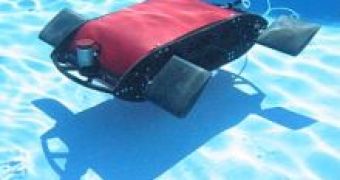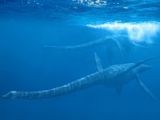Unlike modern animals like penguins and turtles, that have four limbs but use only two for propulsion, the swimming dinosaurs, such as the plesiosaurs, probably used all their limbs. Scientists reached this conclusion by studying the fossils and analyzing the shape and musculature of their appendages. They say that over time, the benefits of two-flippered swimming won out.
But why is swimming only with two limbs better than with all fours and how exactly did the plesiosaurs swim? For understanding what is the most energy-efficient way to use flippers for locomotion John Long from Vassar College and his colleagues at Nekton Research built a biologically inspired robot, called Madeleine.
The robot is controlled with a joystick and has four flippers that model the plesiosaur's limbs. Researchers found that the robot's top cruising speed did not increase when it used four flippers instead of two. They say that the front flippers create turbulence that interferes with the rear flippers' ability to generate forward propulsion. Thus, and animal with four flippers would need significantly more energy for maintaining the same speed as one with two flippers.
However, the scientists and engineers working on this project were surprised to see that, nonetheless, there were some advantages: Madeleine was able to make quicker starts and stops with all fours. Thus, scientists hypothesize that plesiosaurs did not chase their prey, but rather ambush it - this is what a four flipper propulsion system is good for.
Photo: Madeleine, a biologically inspired underwater robot. Credit: John Long, Vassar College
Image: Plesiosaur representation modeled after a skeletal fossil at the American Museum of Natural History in New York. Credit: Researched, modeled and composited by Frank DeNota.

 14 DAY TRIAL //
14 DAY TRIAL // 
